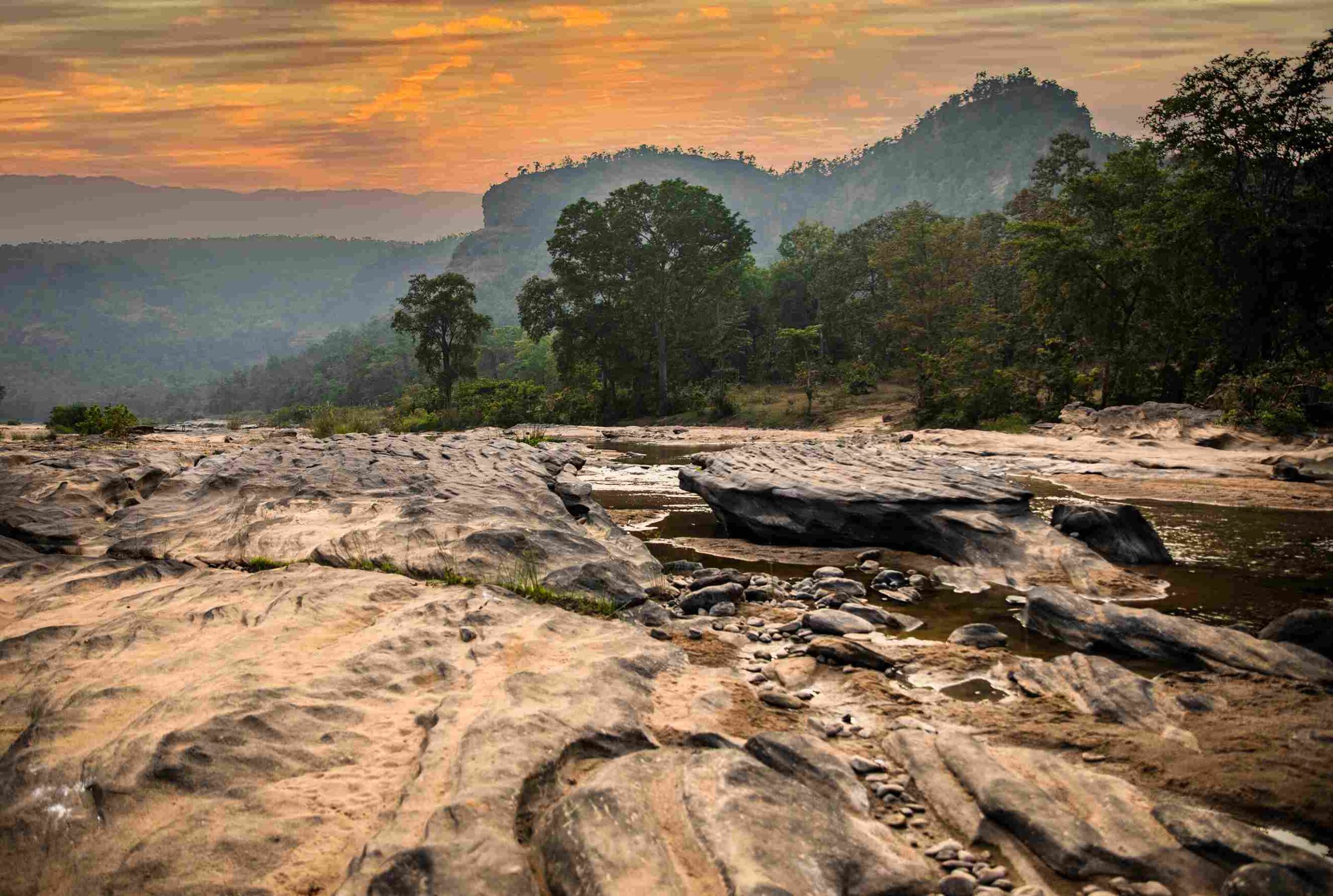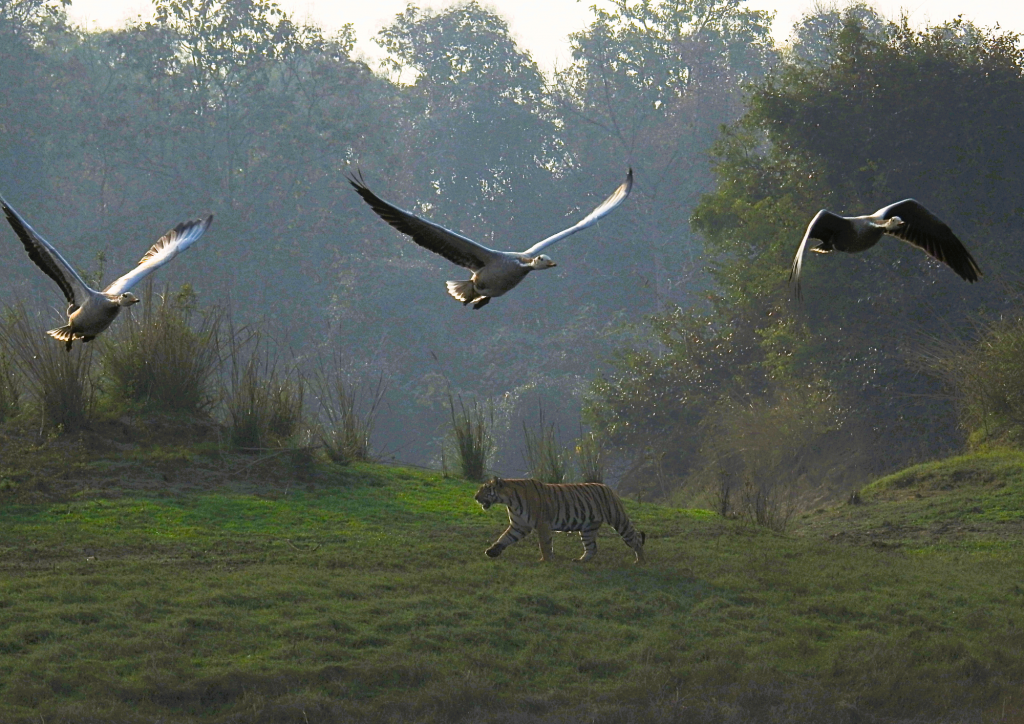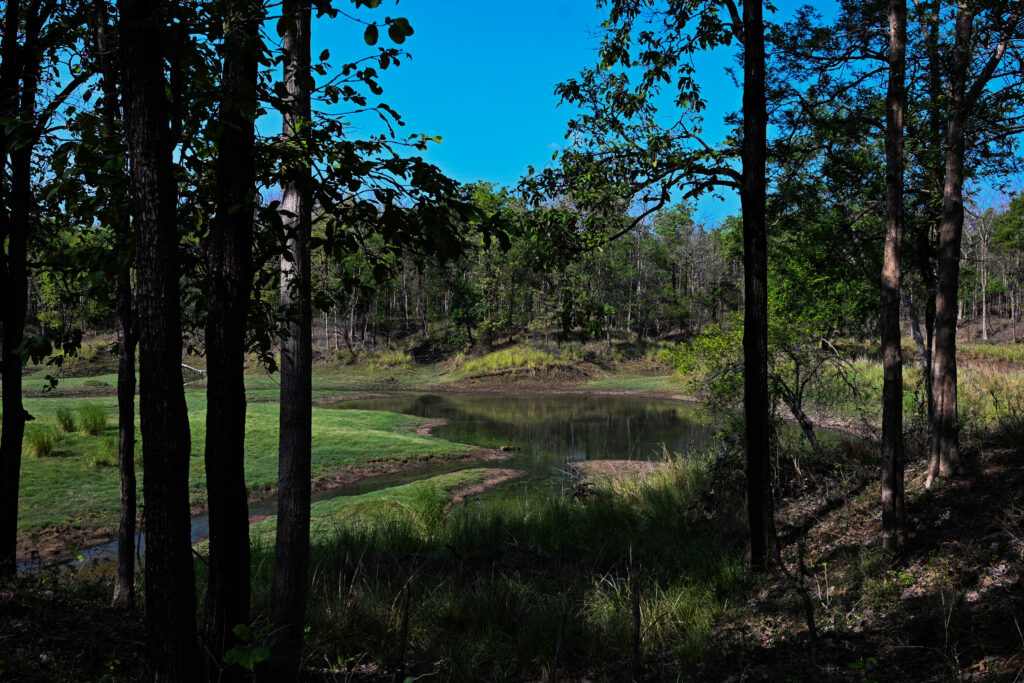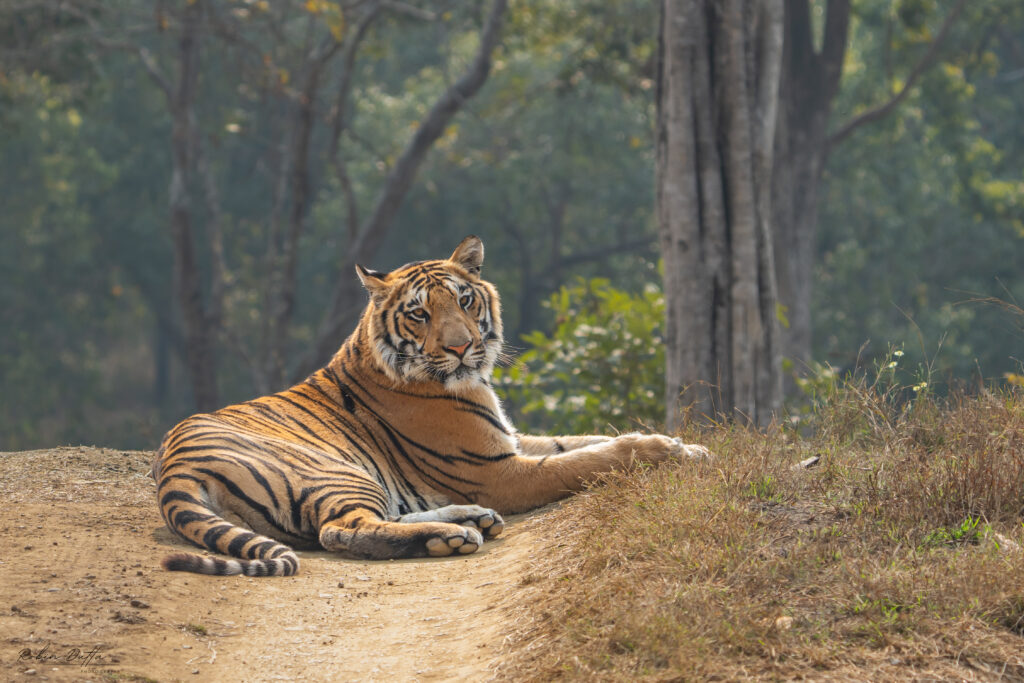The first rays of sun spill over Satpura’s sandstone cliffs, washing the forest in gold. I step out from the comfort of my tent after a good night’s rest, and feel a gentle chill in the air. Heading out for a cup of hot chai around the bonfire, I look at the mist lifting from the Denwa River, and a grey hornbill’s sharp call cuts through the quiet morning. After a delicious breakfast, our group gets ready to set out once again on a route steeped in history.
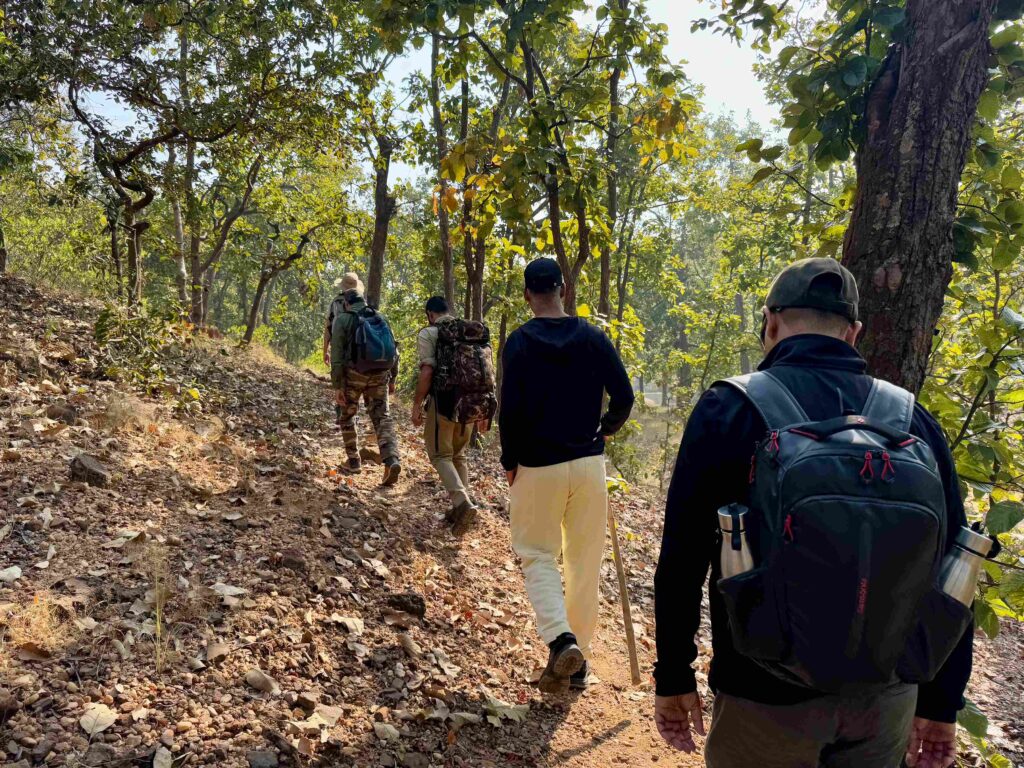
Over 150 years ago, Captain James Forsyth rode these very ridges, mapping a wilderness that felt infinite. Today, we follow in his footsteps with Pugdundee Safaris – not by jeep, but walking the Forsyth Trail, tracing rivers, sandstone cliffs and forests much as he once did. To step into the forest on foot is to step into its wild heart. To peek into its soul. A world of wonder, revealed in quiet moments, gorgeous landscapes, and the ancient language shared by the elements, the trees and the forest’s many inhabitants.
Also Read: The History and Legacy of Satpura Tiger Reserve
On the Trail: A Personal Journey Through Satpura
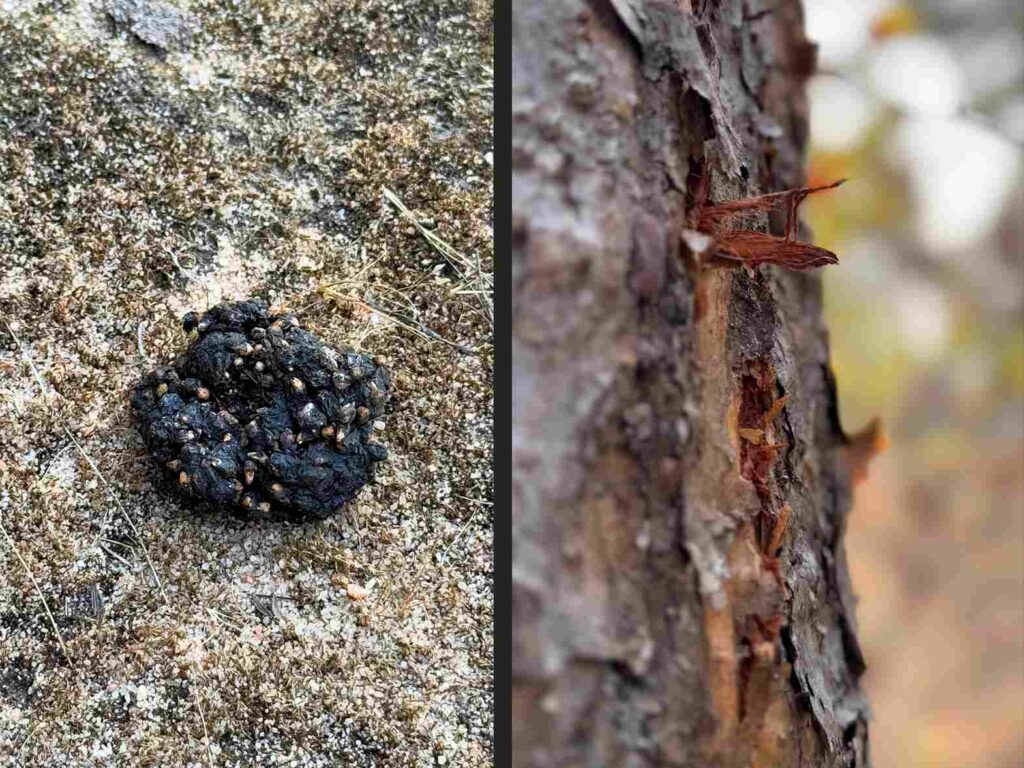
There’s a humility to walking through a tiger reserve. With each step, your senses sharpen. Even a pile of scat becomes a story, telling you what a sloth bear dined on the night before, while claw marks on a tree hint at territorial battles. Our guides and naturalists – patient, deeply knowledgeable, and full of stories – helped us decode these signs, turning every sound and track into a lesson. It makes you realise that the forest is always alive. On a jeep safari, we often focus on larger mammals and birds. But walking offers a chance to discover the smaller creatures one might miss, while looking for signs and stories, at a slower pace.
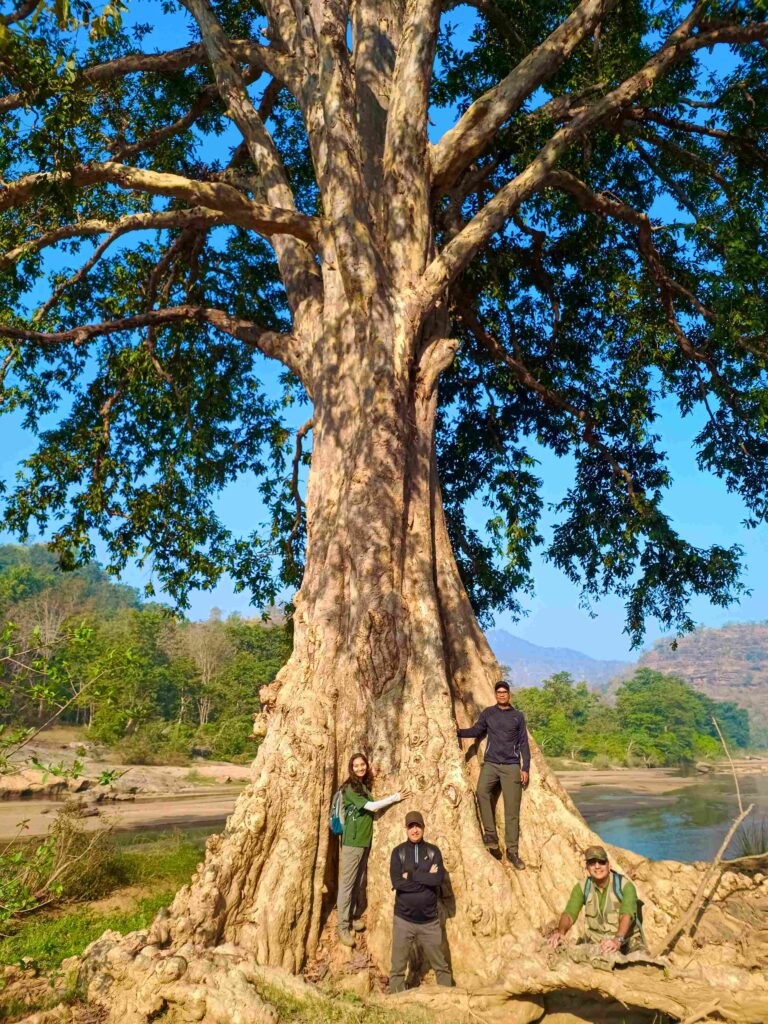
We crossed clear streams barefoot, dipping them in the Denwa river’s cool water on a pleasant January morning as the sun ascended in the sky, and paused to hug a gorgeous Arjun tree that invited us into its fold. Satpura is a biodiversity hotspot for birds, and the air was alive with shrikes, drongos, and several raptors. Butterflies spiraled around sunlit glades, and indulged in mud puddling. Once, we found fresh pugmarks so perfectly defined, and were told that a big cat had passed just moments earlier.
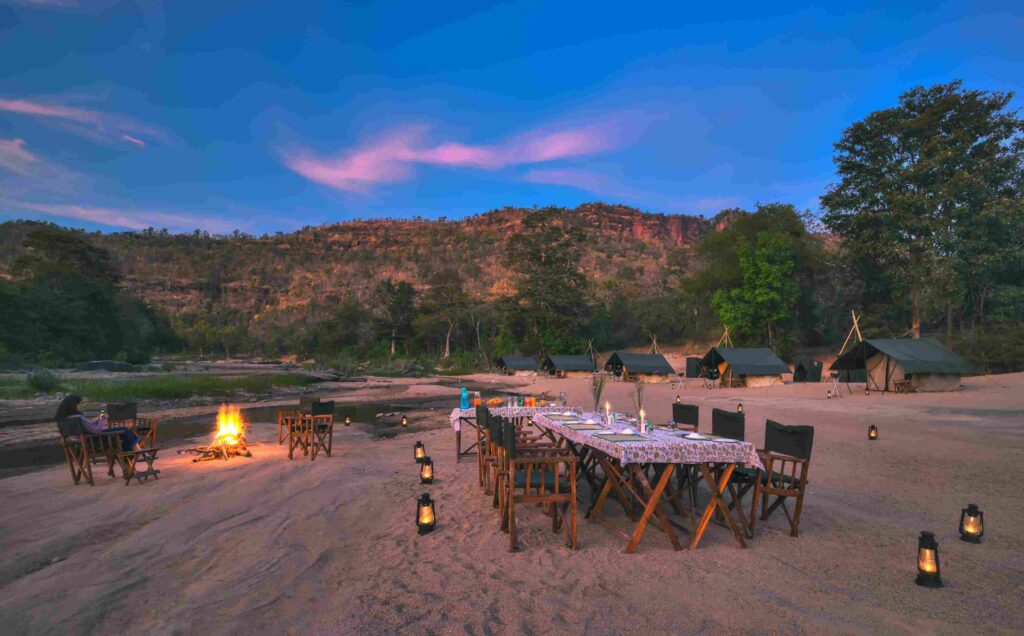
Evenings at camp were pure magic. The attention to detail made this experience luxurious without breaking the spell of the wild. We arrived dusty and exhilarated, to hot water waiting for us, tents already set up with crisp bedding, and the smell of chai brewing by the riverbank. Lunches appeared as if by magic on the trail, set up along the river, with fresh, hearty meals, as we dipped our tired feet into the refreshing water. Dinner was served by the fire under a sky so clear it felt like the Milky Way was close enough to touch. As we swapped stories with fellow travelers, it struck me that sharing these moments with like-minded people deepened the experience even further.
Also Read: Things To Do in Satpura National Park
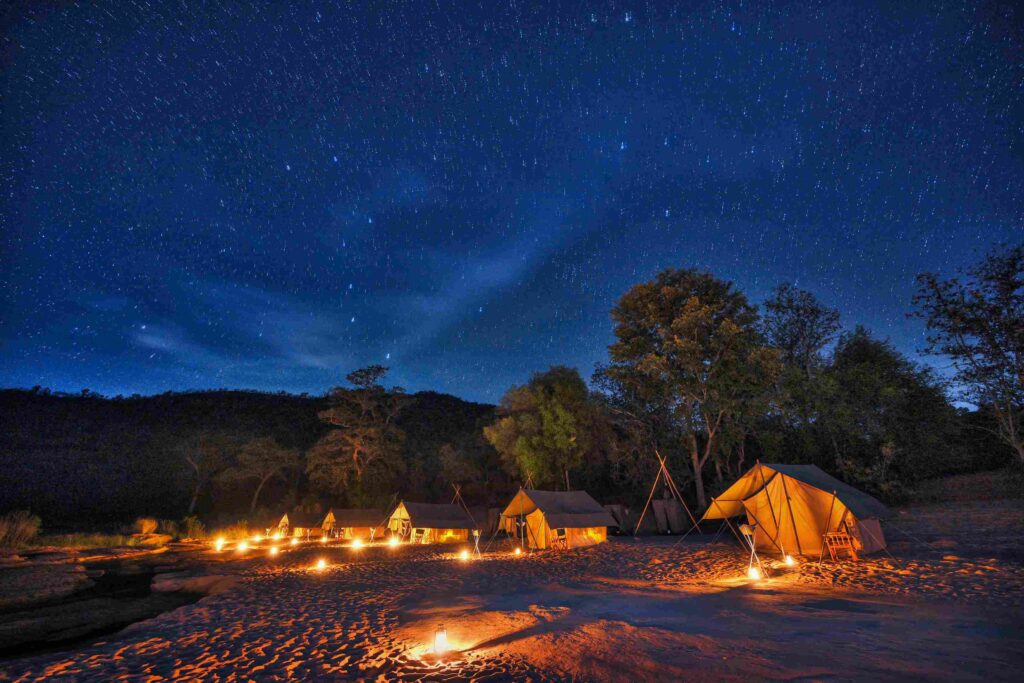
Forsyth Trail Walking Safari Itinerary at a Glance
Day 1 – Arrival
Check in at Denwa Backwater Escape, relax, and maybe opt for an evening safari.
Day 2 – Pachmarhi to Deheliya (14 km)
- Early breakfast, 2-hour drive to the trailhead.
- Walk through forests and valleys, lunch by the Vainganga River.
- Evening arrival at Deheliya campsite on the Denwa River.
Day 3 – Deheliya to Manakachhar (16 km)
- Breakfast on the riverbank.
- Walk along the Denwa, lunch at Jhela, and cross dry deciduous forests.
- Camp beside the Dudhari River at Manakachhar.
Day 4 – Return to the Lodge
- After breakfast, drive back to Denwa Backwater Escape to rest and reflect.
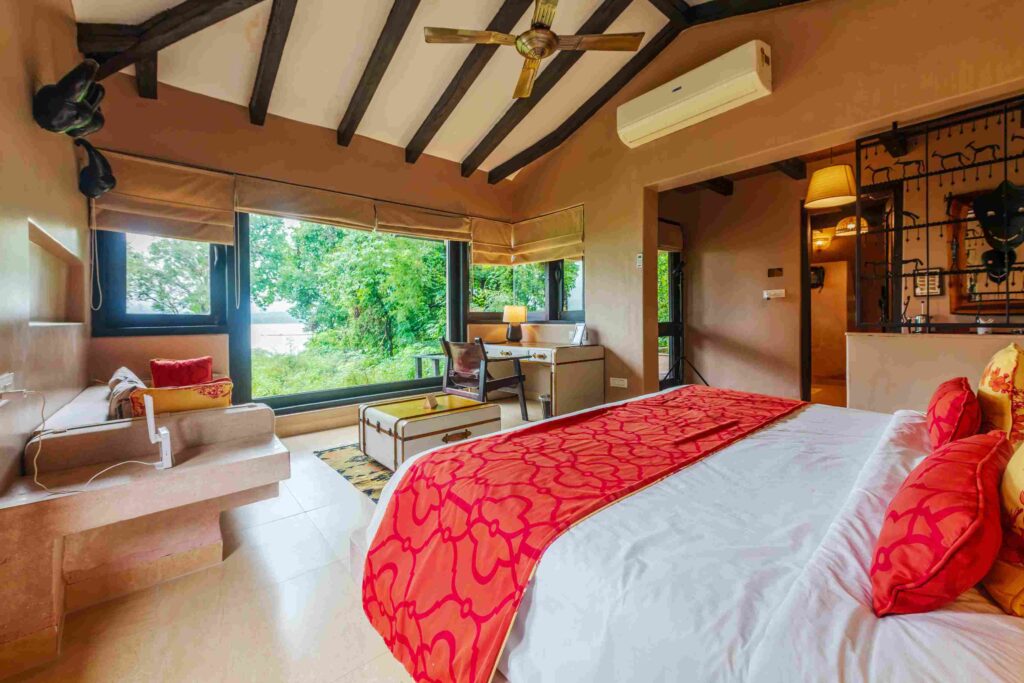
Immersed in the Wild: Why Choose a Walking Safari
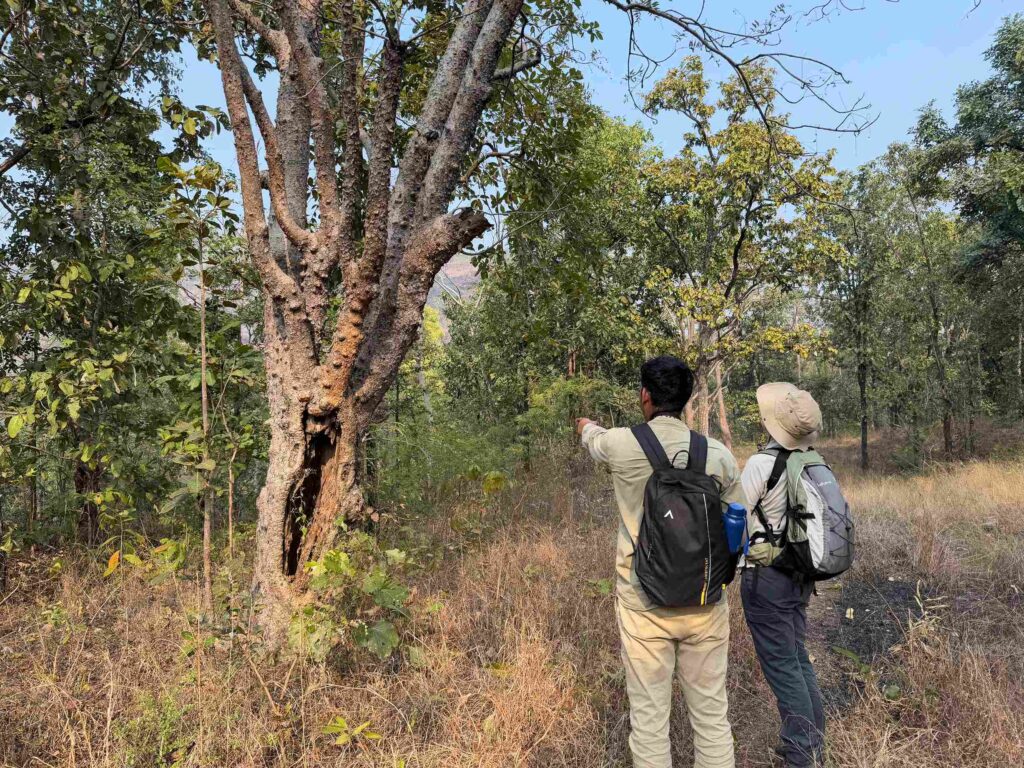
Unlike jeep safaris, walking is a low-impact, non-motorised way of exploring the forest that supports eco-tourism and helps preserve fragile habitats for generations to come. By choosing to walk, you choose sustainability. Walking safaris tread lightly on the land, making them one of the most eco-friendly ways to travel through the wild – a true celebration of slow, mindful exploration. It’s an experience that aligns with responsible tourism, allowing wildlife to remain undisturbed and the wilderness to stay pristine.
Also Read: Best Zones and Gates in Satpura
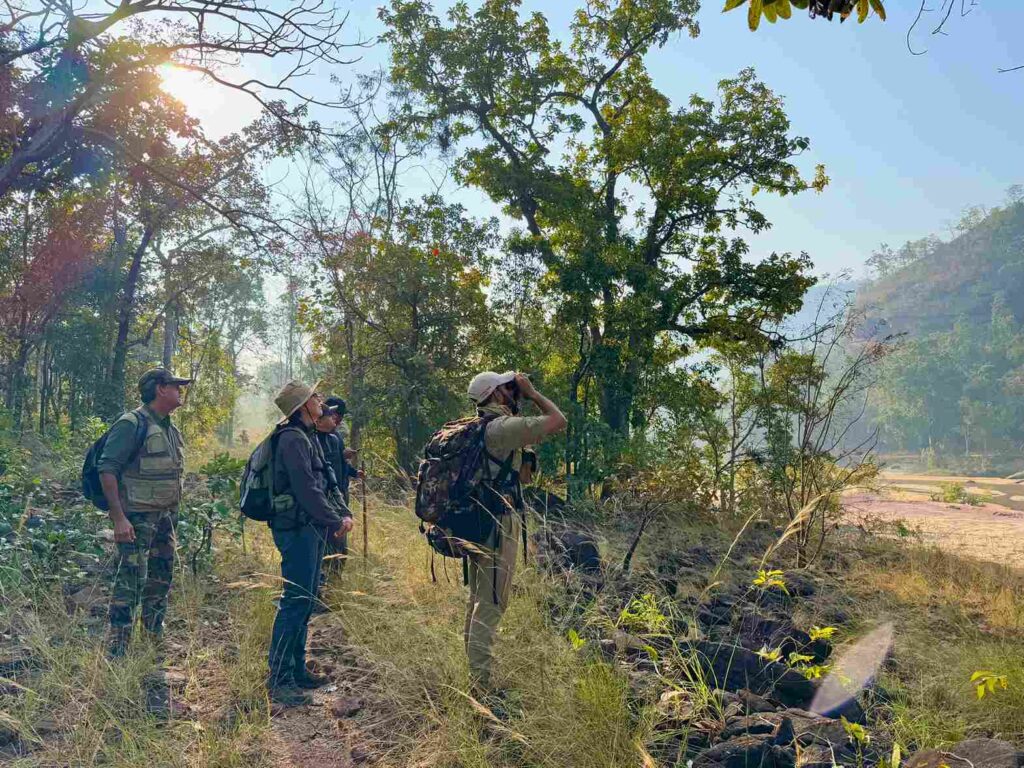
Walking slows you down in the best way. On foot, every rustle, call, and shadow becomes amplified – your senses sharpen, your awareness widens, and you begin to read the jungle’s hidden language. Each step pulls you deeper into the wilderness, where even the smallest signs become revelations. There’s something humbling about knowing you’re sharing the trail with wild creatures, and about living in the midst of vast landscapes too.
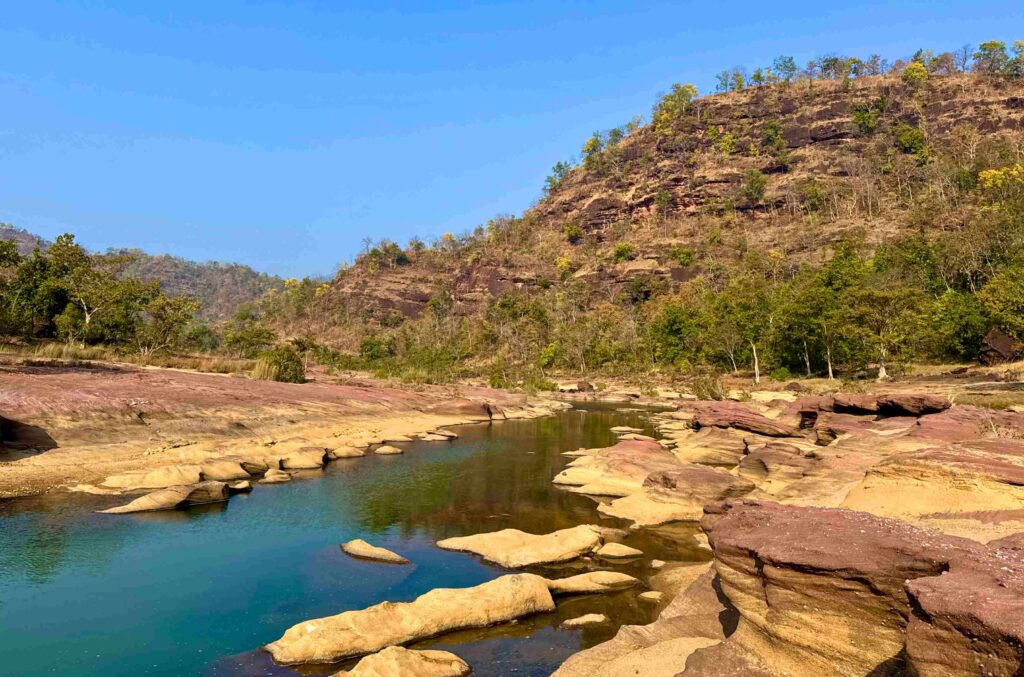
Most safaris keep you at a distance. Walking changes that. It makes you a participant, not a spectator. You don’t just see the forest – you feel it. The trail isn’t just a path; it’s a conversation. The rivers you cross aren’t just landmarks; they’re companions. And the silence of Satpura at night and the birdsong that surrounds you in the morning is a song you’ll never forget.
Packing List & Helpful Tips for Forsyth Trail Walkers
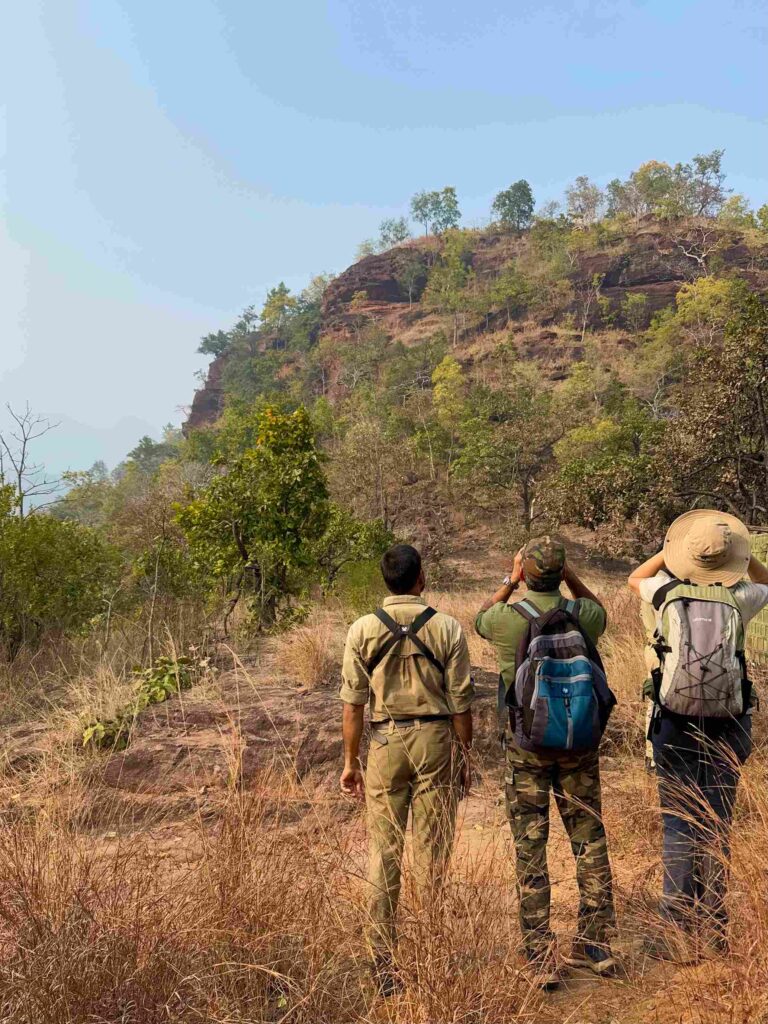
- Pack Light: Use a duffel or smaller backpack to pack for 2 nights; large bags stay at the lodge. You will be carrying a day backpack while hiking.
- Dress for Comfort: Wear earth-toned clothes. Carry layers, including a warm jacket for chilly mornings, and sturdy walking shoes.
- Stay Hydrated: Your guides provide water and meals, but carry a reusable bottle. You will be walking for long hours each day; make sure to hydrate throughout your journey.
- Disconnect: There’s little to no phone signal once you enter the forest. Embrace the digital detox. Disconnect so you can connect with what’s around you. Be where you are, completely; it’s the best lesson in mindfulness.
- Fitness Level: Moderate fitness is needed for 5–7 hours of daily walking with breaks.
- Age Limit: The minimum age is 14, as per park rules.
- What to Carry:
- A good pair of binoculars for birdwatching and spotting
- A camera with a zoom or mirrorless lens to capture the beauty around you
- A flashlight or headlamp would be useful for those magical night walks to the campfire
- A portable powerbank if you plan to use your phone to click photographs or need to charge any other devices
Also Read: Lesser-Known Wildlife Wonders of Satpura
Ready to Walk Satpura’s Wild Paths?
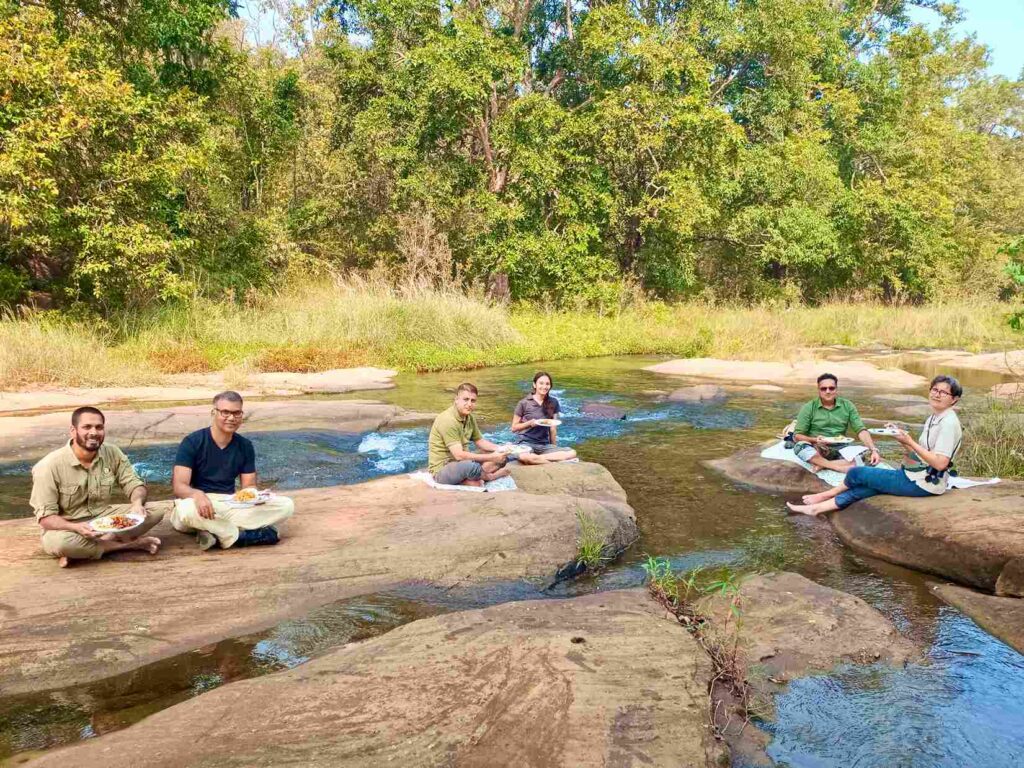
The Forsyth Trail reminded me that wild places are best understood slowly. Every step carried me closer – not just to Satpura’s wildlife, but to a deeper appreciation of the natural world and my place in it. Choosing to experience the forest in this way, and with a high level of hospitality and comfort offered by Pugdundee Safaris in the heart of Central India’s forests, is bound to leave you both exhilarated and grounded.
If you’re looking for an adventure that’s equal parts thrilling and soulful, pack your boots and your curiosity. Spaces are limited for upcoming dates. Step into history, luxury, and wilderness.
Reserve Your Spot on the Forsyth Trail Walking Safari with Pugdundee Safaris.
Written by Pooja Kumar
About the Author: Pooja is a nature and wildlife enthusiast who finds joy in exploring the wilderness, whether on safari in the forests or hiking in the hills. As a content writer with Pugdundee Safaris, she draws inspiration from nature to craft stories and poetry that connect the human experience with the beauty of the natural world. Through her writing, she hopes to inspire and educate others about the wonders of wildlife and conservation.

